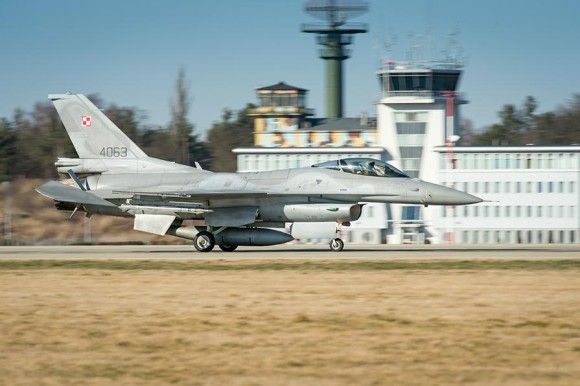Industry
MSPO 2017: Borsuk IFV Unveiled
Huta Stalowa Wola S.A. company has unveiled a model of the Borsuk IFV during the MSPO 2017 defence industry exhibition. The model has been created out of the target armour steel material, it features a hydropneumatic suspension system and the ZSSW-30 remote-control turret module, acting as the primary armament. Kielce event is an arena on which the vehicle has been rolled out for the first time. It has been designed to replace the obsolete BWP-1 IFV (BMP-1) platform in the inventory of the Polish Armed Forces.
Undoubtedly, this is the most expected premiere of this year’s Salon. The showcased example, formally referred to as a model, may be viewed as a pre-prototype of the NPBWP platform (Nowy Pływający Bojowy Wóz Piechoty – New Amphibious Infantry Fighting Vehicle). It has been created with the use of the armour steel material which is expected to be applied in case of the production Borsuk examples. The vehicle also features an original hydropneumatic suspension system, expected to be used in case of the new design.
The platform has also been fitted with the ZSSW-30 remote control unmanned turret which is being manufactured under the guidance of the HSW S.A. company too. The turret module in question is expected to be fitted onto the NPBWP Borsuk (Badger) platform, and onto the Rosomak APC. Original powerpack for the Borsuk vehicle, prepared by the Poznan-based WZM No. 5 facility (Military Automotive Works) is also being presented in Kielce.
When the exhibition piece in a form of the new IFV was being prepared, it was an aware decision made by HSW not to fit it with the whole equipment package that is expected to be seen onboard this platform in its production variant, such as the A/C/ventilation system, communications suite, and so on. Following the MSPO event, the said Borsuk vehicle, still referred to as a “model” (mock-up) is going to be involved in the initial test programme.
The goal of the test programme is to confirm the design assumptions referring to the land traction of the platform, as well as its amphibious capabilities during the tests in the water, also covering the different phases of the amphibious operations (entering the water, getting out of the water, waves impact, impact of systems arrangement on the operation of the vehicle in the amphibious setting, breakwater effectiveness in relation to load carried by the vehicle, effectiveness of the thrusters, etc.).
HSW S.A did not confirm this explicitly, however it remains highly probable that IED/mine resistance tests would be the final phase of the preliminary test programme concerning the model/pre-prototype. The results of the said tests shall provide us with an ultimate view on the effectiveness of the IED/mines protection solutions applied in case of the vehicle.
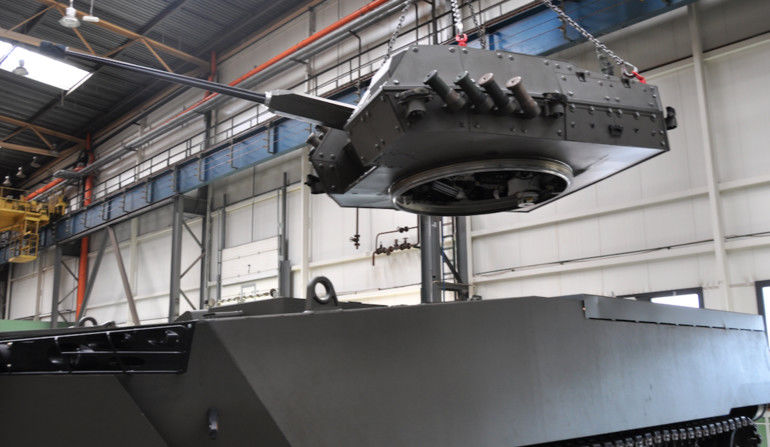
Regardless of the analyses and simulations carried out at civil and military research centres, field tests have been carried out with models of the bottom part of the Borsuk’s hull. This allowed the designers to direct and focus their efforts pertaining to the design of the hull bottom, as well as to selection of the explosion energy absorber applied in the bottom part of the vehicle (three variants were being considered).
The effectiveness of the assumed solutions and reliability of the test programme may only be confirmed through a test involving a full-scale test-bed. It is only this method that allows the designers to obtain full data concerning the relations occurring between the structural components of the vehicle, when it is exposed to the explosion, when the body dissipates and absorbs the energy of the explosion, for the purpose of minimizing its impact on the vehicle crew and on the troops, as well as on the critical components of the vehicle’s structure, which is decisive for its survivability in battlefield conditions.
This needs to be verified with involvement of an actual, full-size hull, created out of the very same material that is going to be used to create the production platforms, with the use of special test-dummies fitted with sensors and placed in the 3 crew-seats and 6 seats of the troop compartment.
The full test programme will involve the prototype planned to be created in 2018 and configured in line with the design specifications. The initial and qualification tests that would make it possible to finalize the R&D phase of the project, in line with the assumptions made, are to end by June 2020. Such schedule has been arranged between the consortium and the National Centre for Research and Development, with the latter entity acting as the Ordering Party in the NPBWP programme.
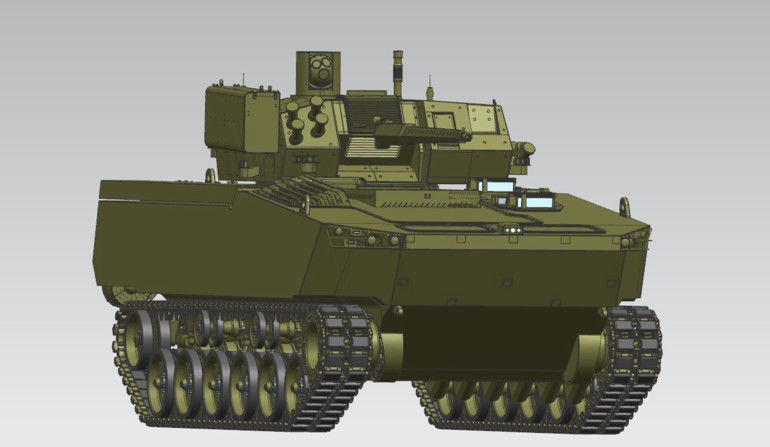
Let us recall the fact that the aforesaid programme was to begin back in 2013, however the April 2013 competition announced by the National Centre for Research and Development was cancelled. 5/2014 competition has resulted in signing, on 24th October 2014, of an agreement concerning an R&D study, with a budget of PLN 75 million.
In the year 2016 the R&D works have reached the phase II - emergence of a conceptual design and technological-economic analysis. Then, the approved terms of reference (initial tactical and technical assumptions) were handed-off to the contractor in October 2016. This made it possible to create the initial design in April 2017, and on the basis of the said design a pre-prototype, also formally referred to as a model, has been created. The result of this stage of works, created out of armoured metal, has been exhibited at the HSW S.A.’s and PGZ’s stand during the MSPO 2017 defence industry salon in Kielce.
Notably, starting from the moment when the project was born (conclusion of the contractual agreement with the National Centre for Research and Development) less than 3 years have passed. If further work proceeds at a pace planned, another 33 months are going to pass until the test programme ends and the IFV is ready for the stage of series production.
If the schedule is implemented in line with the plan, this would mean that series manufacturing readiness would be attained in a relatively short term, in comparison with other, comparable programmes pursued around the world. The presentation of the model/pre-prototype, during the MSPO event, constitutes a major step made in that direction.
One of the relevant factors that shaped the work is the requirement of amphibious capability, defined for the new platform. The need to fuse the aforesaid requirement and a high level of ballistic and IED/mine protection abilities has created one of the toughest challenges for the designers of the vehicle.
IED/ballistic protection levels data, as well as the amphibious capabilities data, are contained within the confidential portion of the tactical and technical requirements, thus it remains very difficult to scrutinize the said matter precisely. This also applies to any comparison that could potentially be made to other contemporary IFV platforms. Only a few of the new generation vehicles have been designed with the amphibious capabilities in mind. Here we mean the Turkish Tulpar-S and Kaplan-20 platforms (with no detailed data available) or the Korean K21 vehicle.
Meanwhile, the strongly armoured German Puma IFV has not been designed in a way allowing it to cross water obstacles by using the amphibious capacity. The unofficial information that has not been confirmed, neither by HSW, nor by the National Centre for Research and Development, suggests that Borsuk is closer to the Puma IFV dimension-wise, than to the CV90 family vehicles.
Amphibious capacity requirement which has been controversial, even among the military, forced the designers to adopt some compromise solutions, also making the works longer and more expensive. This has been caused e.g. by the work on protecting the flat hull bottom of the tracked amphibious vehicle from IEDs/mines. The said effort has been undertaken in collaboration with the Military Institute of Technology, Military Institute of Armoured and Automotive Technology and other research bodies and entities.
At the current stage though, the works have been fairly advanced. As declared by the representatives of the HSW facility, potential decision changing the tactical and technical assumptions (that have not been approved as of yet), by dismissing the amphibious capabilities requirements, would not be beneficial for the programme, from their point of view. For example, due to the fact that some relevant experience has already been gathered when the said IFV was being designed. Change of the requirements at the current stage would mean that some of the results of the works that have required a lot of funding and effort would be rendered useless.
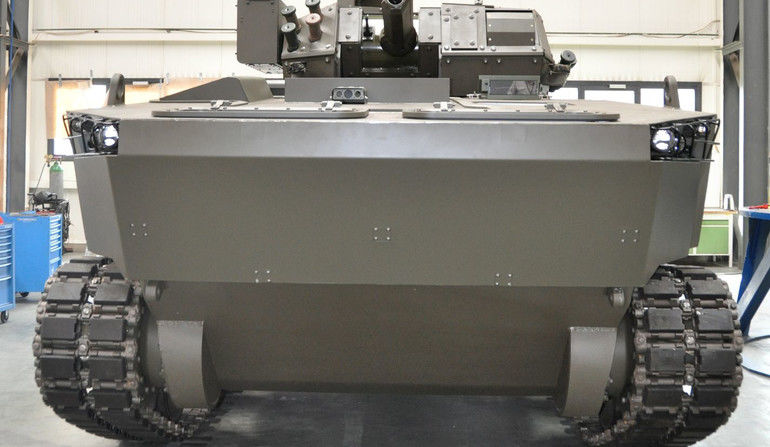
A principle also has been adopted, among the engineers working on the project: it is easier to turn an amphibious IFV into a well-armoured platform, than to reverse the design direction, and to teach a heavy vehicle how to swim. And this was the primary design assumption adopted. Throughout the process of designing the core traction components, including the powerpack, drivetrain and the hydropneumatic suspension and continuous tracks, the heaviest IFV arrangement was being taken into consideration, with high level of ballistic and IED/mines protection.
Such version would weigh around 30 tonnes, with modernization reserve of 2 tonnes, allowing the designers to implement BMS or active vehicle protection systems in case of the platform, both of which were included in the requirements from the very beginning of the project anyway. If and how such elements would be implemented - this is a separate issue.
The ultimate form of the BMS system has not yet been defined by the Armed Forces as of yet, even as initial tactical and technical assumptions. Same applies to the expectations related to the active vehicle self-protection system. The analysts working in the field also cannot agree on the matter of effectiveness and purposefulness of the applied solutions, considering the cost of implementation, as well as on the matter of risks posed by the self-protection suite being activated on the battlefield for own soldiers, supporting and covering the IFV’s operations.
So far, similar solutions were being applied only within a limited scope. On the other hand though, a trend has emerged to expand the use of the active vehicle protection suites. Similar solutions are going to be implemented for example by the US Army in case of main battle tanks, and also, ultimately, in case of other combat vehicles expected to be deployed in Europe.
The active vehicle protection systems’ advantage is that they may act against ATGMs. The latest large caliber ATGMs utilizing tandem-warheads are seen as a threat even for the heavily armoured IFVs.
Up until recently it was frequently assumed that fitting an active protection suite on an IFV would mean that additional weight of 1 tonne would be placed on the vehicle. The current analyses suggest though that the whole system may weigh as little as 300 kilograms. Elastomer continuous tracks, used instead of steel ones, may also be used to bring down the vehicle weight - here we are speaking of platform that would be 500 kilograms lighter, if such solution is applied.
Borsuk platform has been designed in a manner different from most of its counterparts, as it may use both types of tracks. Neither does replacement of the tracks, in field conditions, require specialist equipment, nor is it time-consuming. Not only are the rubber tracks lighter, as they are also more silent and create less resistance, diminishing the fuel consumption and extending the range. They also act as shock-absorber, making the ride more comfortable for the crew and troops inside the vehicle. Optionally it would be possible to have the new, series-manufactured, IFVs delivered with two types of tracks for each and every vehicle, allowing the user to decide on use of the specific type, depending on the operational conditions.
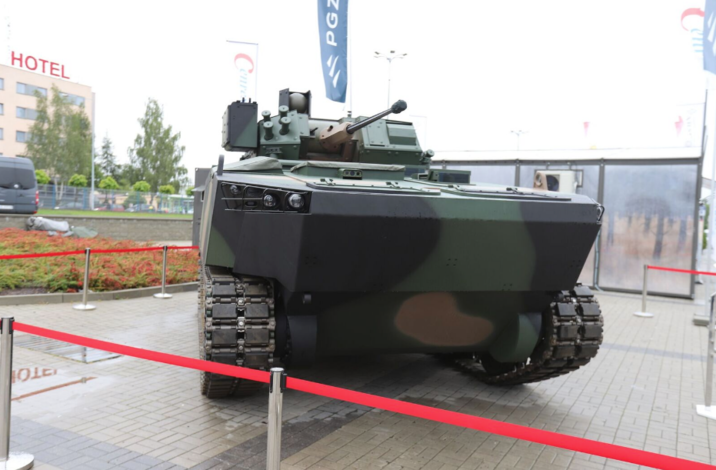
Also, at least so far, the final shape of the BMS suite configuration has not been defined. From the point of view of the designers it would be desirable to have the knowledge of the shape of the battle management system which is to be fitted onto the Borsuk platform. This would make it possible to install such system on the prototype.
This may also make it easier for the engineers to design the datalinks and communication channels. Developing a universal electric system and electronic network structure would be yet another, but much more difficult, way to go, with proper division into RED and BLACK sections, potentially capable of being integrated with any BMS suite one could imagine.
Borsuk platform, in its amphibious variant, is to have a weight of up to 24-25 tonnes, and undisclosed, at least for now, level of IED/ballistic protection. Through fitting the vehicle with ceramic/composite armour panels of high quality delivered by the Polish industry, the weight of the vehicle will go up to the aforesaid 30 tonnes.
MTU 600 kW engine has been selected to be used by the Borsuk IFV (twice as powerful as in case of the 17-tonnes Regina system platform engine - 6V199TE20 engine, and more than twice as powerful as the engine of the BWP-1 IFV), coupled with an automatic gearbox with 4 speeds for forward and 2 speeds for reverse movement.
According to the initial calculations, one may reach results in accordance with which the HSW IFV would have a power-to-weight ratio ranging from 21.2 kW per tonne (for the lightest variant presented during the MSPO event), to 17.7 kW per tonne, for the version with the heaviest armour. Such parameters would ensure good mobility of the platform. For the sake of comparison, one may recall the fact that the BWP-1 (BMP-1) platform, which is obsolete, carries 8 troops and weighs 13 tonnes, also retaining the amphibious capabilities and featuring weak armour and archaic armament, the greatest advantage of which is seen in its mobility, has the power to weight ratio which equals 17 kW per tonne.
The Borsuk-derived specialized versions (CRBN reconnaissance vehicles, technical support vehicles, scattered mine-laying platforms etc.) would weigh around 30 tonnes, and thus they would probably not feature the water thrusters applied in case of the amphibious, primary variant, which consequently would allow the engineers to make better use of their interiors, for the purpose of arranging the specialist equipment inside.
Not only are the architecture and dimensions of the troop compartment to make it possible to carry Tytan-ensemble equipped soldiers, but also ammunition for the ZSSW-30 turret - the 30/40 mm cannon and machine gun, along with 4 Spike-LR ATGMs. There is no information available regarding the fact whether the Army is considering to introduce extra equipment for the support squads, carried in the troop compartment, e.g. in a form of a MANPADS system launcher.
Borsuk, alongside the Berberys armour, is also to receive a multi-spectral mobile camouflage offered by Lubawa S.A. The said camouflage diminishes the vehicle’s radar and IR signature, making it more difficult to detect the platform wearing it with night-vision sensors, as the vehicle is reminiscent of the surroundings.
HSW S.A. indicates the aforesaid extras as examples of expansion of the capabilities offered by the basic platform, constituting the first step towards creation of a large family of military equipment based upon a homogeneous, unified vehicle.
The family of vehicles mentioned above, alongside the IFV, is to include a reconnaissance vehicle, CRBN reconnaissance platforms, MEDEVAC vehicle, tracked personnel carrier and an ARV.
The platform may become a basis for the tracked version of the Rak self-propelled mortar or for command and staff vehicles utilized both at the support company levels in the elements using the tracked-variant Rak mortar (SMG120), as well as in the further Regina units, in case of which the command vehicles are based upon a light tracked platform derived from the 2S1 Gvozdika self-propelled howitzers. The value of the Borsuk IFV programme, considering the requirement to create the specialized variants, armament modules, and so on, may be as high as several billion zlotys.
Jerzy Reszczyński


